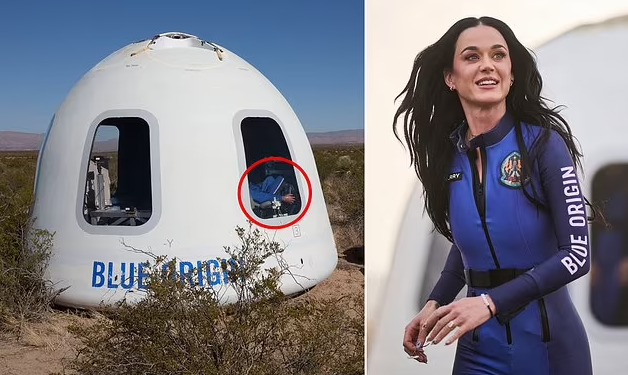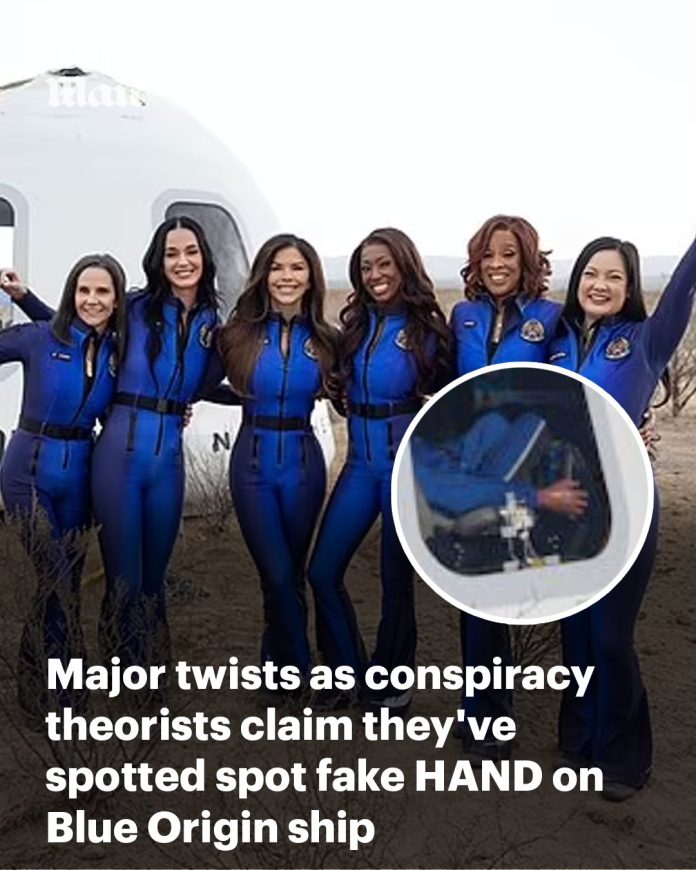Blue Origin’s recent suborbital flight, featuring six female passengers including Katy Perry and Gayle King, has become the subject of online conspiracy theories. Despite the mission’s success and live-streamed coverage, skeptics on social media platforms, particularly X (formerly Twitter), have questioned the authenticity of the flight.
The Flight and Its Participants
The 11-minute journey aboard Blue Origin’s New Shepard rocket marked a significant milestone, with an all-female crew experiencing weightlessness and viewing Earth from space. The mission was widely celebrated and viewed as a step forward in space tourism and gender representation in spaceflight.

Emergence of Conspiracy Theories
Shortly after the flight, social media users began circulating theories suggesting the mission was staged. One focal point was a video clip showing the capsule’s hatch appearing to open briefly from the inside before Jeff Bezos officially opened it post-landing. Critics argued this contradicted standard procedures. However, NASA clarified that such hatches are designed to be operable from both inside and outside, allowing crew members to open them if necessary.
Celebrity Skepticism and Public Doubt
Public figures like Azealia Banks expressed skepticism, questioning the flight’s duration and authenticity. She tweeted, “I don’t think they even went to space that shit was fake af. How they back already it’s been like 40 mins.” Others echoed similar sentiments, citing the brief nature of the mission and the appearance of the footage as reasons for doubt.
Debunking the Myths
Despite the speculation, there is substantial evidence supporting the mission’s legitimacy. The flight was live-streamed, with millions watching the launch, in-flight activities, and landing. Blue Origin provided detailed mission data, and the passengers shared their experiences post-flight. Experts emphasize that the skepticism lacks credible evidence and is rooted more in speculation than fact.

Historical Context of Spaceflight Skepticism
Conspiracy theories surrounding space missions are not new. From the moon landing hoax theories to doubts about William Shatner’s spaceflight, skepticism has often followed significant space achievements. These theories typically rely on misinterpretations or misinformation rather than substantive evidence.
Conclusion
While skepticism is a natural response to groundbreaking events, it’s essential to rely on verified information and expert analysis. Blue Origin’s recent mission stands as a testament to advancements in space tourism and the increasing inclusivity of space exploration. As with all scientific endeavors, transparency and evidence should guide public perception over unfounded speculation.

















